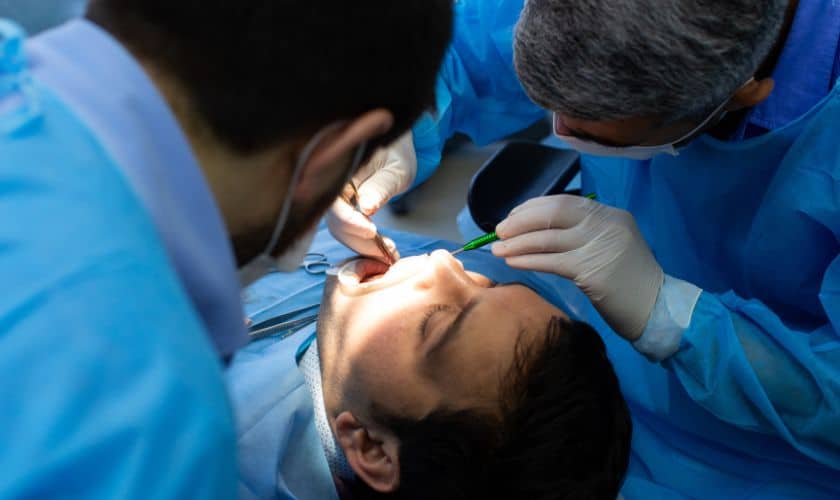(707) 622-6748
Welcome to the future of dentistry, where lasers are transforming the way we maintain our oral health. Laser dentistry is a groundbreaking technology that offers a wide range of benefits over traditional dental procedures. From reducing discomfort to increasing precision and efficiency, laser dentistry has captured the attention of both patients and dental professionals alike. In this blog post, we will delve into the exciting innovations and potential applications of laser dentistry that are shaping the future of dental care as we know it. So sit back, relax, and get ready to discover what lies ahead in this brave new world of laser-powered smiles!
What is Laser Dentistry?
Laser dentistry is a modern approach to dental procedures that uses specialized lasers to treat various oral conditions. Unlike traditional methods, laser dentistry involves the use of intense light beams to perform precise and efficient treatments while minimizing discomfort and recovery time.
One of the main advantages of laser dentistry is its versatility. Lasers can be used for a variety of dental procedures, including cavity detection, gum disease treatment, teeth whitening, root canal therapy, and even surgery. With their precision and accuracy, lasers allow for less invasive techniques that often require little or no anesthesia.
How laser dentistry works
Laser dentistry is an advanced dental treatment method that uses focused light beams to treat various dental conditions. Unlike traditional methods, laser dentistry offers a more precise and less invasive approach to treating gum disease, tooth decay, and other oral health issues.
Lasers work by emitting energy in the form of light. In laser dentistry, this light is directed at specific areas of the mouth using specialized equipment. The concentrated beam of light can be used for cutting soft tissue or hard tissue like teeth or bone.
The intensity and wavelength of the light can be adjusted according to the specific condition being treated. This allows for a highly customized treatment plan tailored to each patient’s unique needs.
One key advantage of laser dentistry is its ability to minimize bleeding and swelling during procedures compared to traditional methods. Additionally, lasers often require less anesthesia which leads to shorter recovery times after treatments.
Given its precision and versatility in treating many complex oral health problems with minimal discomfort during and after treatment sessions – it’s no surprise that laser dentistry has become increasingly popular among both patients and practitioners alike!
Types of lasers used in Dentistry
Laser dentistry involves the use of different types of lasers, each designed for specific dental procedures. The most commonly used lasers in dentistry are soft tissue and hard tissue lasers.
Soft tissue lasers emit a wavelength that is absorbed by water and hemoglobin, making them ideal for gum-related treatments. These include gingivectomies, periodontal therapy, and frenectomies. Soft tissue lasers also provide more precision compared to traditional methods, reducing bleeding and post-operative discomfort.
On the other hand, hard tissue lasers cut through enamel and bone with minimal damage to surrounding tissues. They are commonly used for cavity detection, teeth whitening, root canal therapy, and even crown lengthening procedures.
Erbium YAG (Er: YAG) laser is one type of hard tissue laser that produces energy at a wavelength highly absorbed by hydroxyapatite which allows it to remove both tooth structure as well as diseased tooth material without damaging or heating the healthy tooth material.
In summary, understanding the various types of dental lasers helps patients appreciate how advanced technology has revolutionized modern-day dentistry. By using these tools appropriately during treatment, your dentist can help you maintain good oral health while minimizing pain or discomfort associated with traditional dental practices.
Potential applications of laser dentistry
Laser dentistry has shown great potential in various dental procedures. One of the most significant applications of laser dentistry is its ability to perform gum surgeries without cutting or stitching the tissues, resulting in less pain and faster healing times.
Another potential application is the removal of tooth decay. Lasers can precisely remove the decayed part of a tooth without affecting healthy tissue, making it a more conservative approach than traditional drill methods.
Laser dentistry can also be used for teeth whitening procedures by activating bleaching agents with light energy. This method provides quick results and is less invasive than other whitening techniques.
In addition, lasers can effectively treat oral lesions, such as cold sores and ulcers, by reducing inflammation and speeding up healing times.
Furthermore, periodontal disease treatment using lasers has shown promising results in reducing bacterial levels and promoting tissue regeneration.
Laser dentistry offers numerous potential applications in improving dental care outcomes for patients.
Summary
To sum up, laser dentistry has come a long way in recent years and is poised to revolutionize the field of dentistry. Its numerous benefits such as reduced pain, quicker healing time, and precision make it an attractive option for both patients and practitioners. With its potential applications ranging from cavity treatment to gum disease management, laser dentistry is set to become increasingly popular.
As exciting innovations continue to emerge in this field, it’s clear that the future of laser dentistry looks bright. We can expect further advancements that will make dental procedures even more comfortable and efficient for patients while also making life easier for dental professionals.
So if you’re looking for a fast, effective way to improve your oral health or simply want to experience the latest technology in dental care – consider trying out laser dentistry!
by delivering energy in the form of light waves through an optical fiber attached to a handpiece. The dentist then directs this light beam onto the targeted area with extreme precision using special glasses designed to protect both patient and practitioner from excessive exposure.
Laser technology has revolutionized the field of dentistry by providing patients with more comfortable experiences during procedures while ensuring faster healing times. As such, it’s no surprise that more dental clinics are incorporating laser technology into their practices than ever before!


